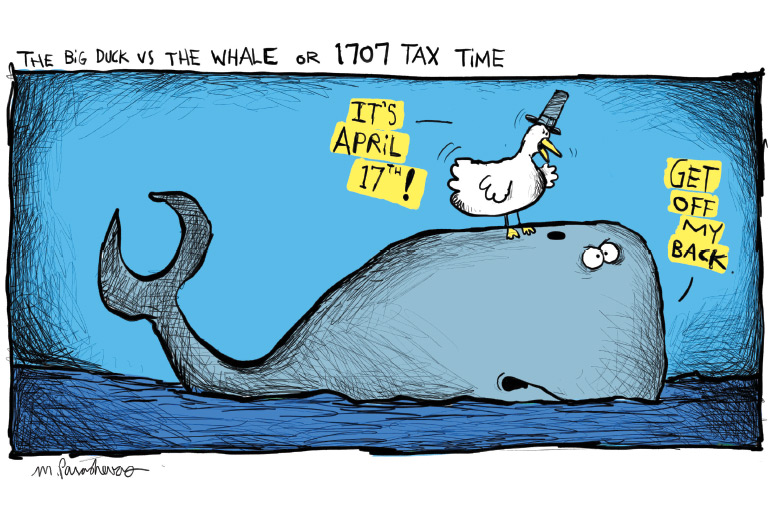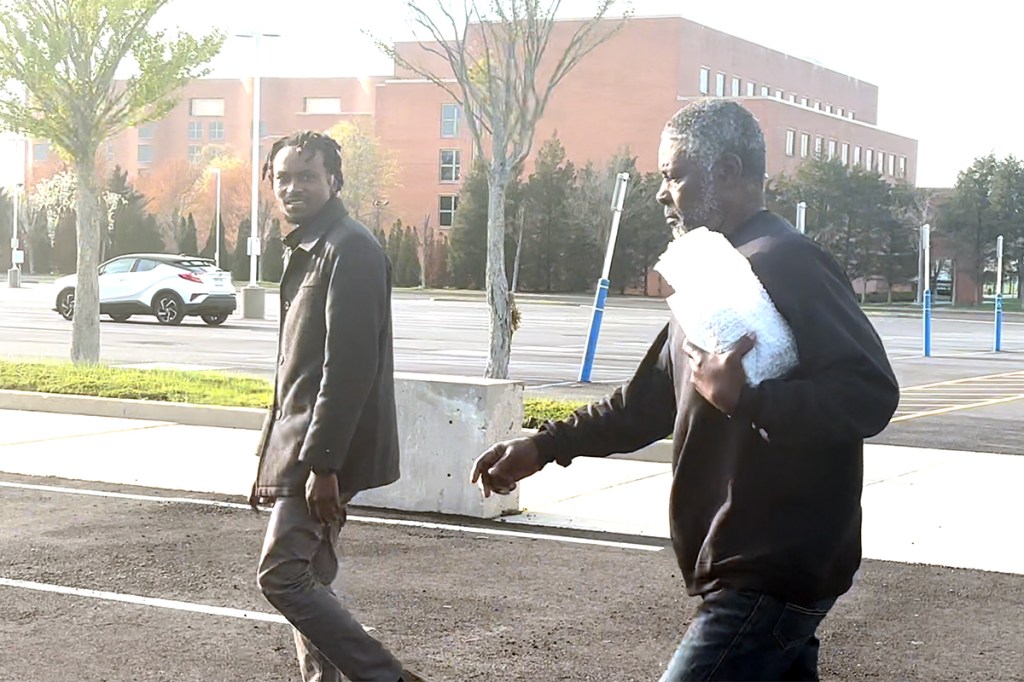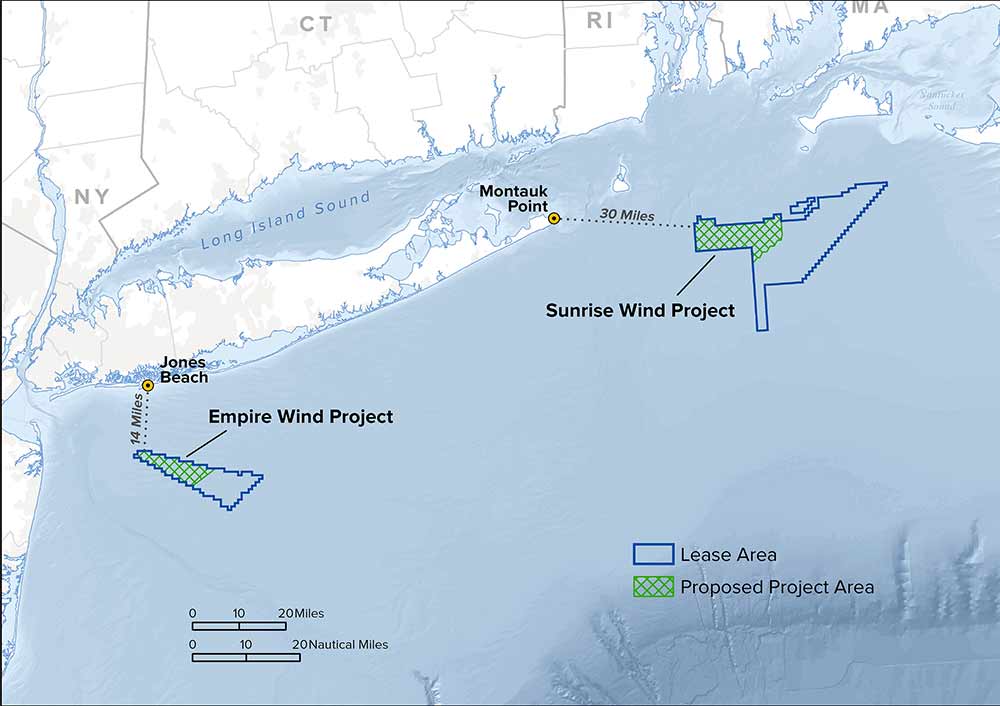Splitting Sag Harbor: When East Hampton and Southampton Went to War

Did you know that the Towns of East Hampton and Southampton fought a border war many years ago?
It involved the location of the borders of Sag Harbor, it was inconclusive and today you can see the ragged remnants of this war, in the peculiar town line that separates these two adjacent communities. It was not even what was agreed upon, because one side surveyed it and not the other. So it just lays there today, all mixed up, because nobody wants to go through all this again.
The legend of this fight has been handed down from father to son, mother to daughter, for nearly 300 years. It lasted for 40 days. A short war. Hard feelings followed. How much of it is true, we do not know. But there doesn’t seem to be any other plausible explanation to explain what happened.
Before going into it, however, you’ll need a short lesson in New York law explained. Communities are divided into townships, which cover large areas. Inside townships, villages sometimes form. They get voted into existence by the populace of the future village. Then the village administers this smaller area, which is often surrounded by the township.
In the 1600s, both East Hampton and Southampton were declared Towns by the King of England. But by 1690, a busy village, larger than the villages in either town, sprang up. This was the whaling port of Sag Harbor. It started as some small cabins by a small pier. But in 1707, a huge wharf was constructed and dozens of ships were soon berthed there. Then one day, a 29-year-old whaleboat captain named Ulysses Harrison became the mayor of Sag Harbor by default.
The community realized Sag Harbor needed a police presence and a village jail for many of the rowdies who worked on the boats during the day and drank themselves drunk in the bars at night. Many of these citizens were from foreign lands such as Fiji or China or Patagonia. They were mates on the whaleboats who, when retired, settled here. Many spoke different languages from one another. Sag Harbor was quite the Wild West scene. A mayor should be a young man. Harrison had retired to Sag Harbor wealthy at that young age, crippled by a dangerous encounter at sea with a shark. Selected by acclimation, he took the job.
Unfortunately, Harrison didn’t consult the Town of Southampton, into whose jurisdiction the growing village, unincorporated, fell. Southampton Town Supervisor Ned White, an older, humorless man, wrote a letter to Harrison in Sag Harbor’s new Village Hall, which was next to the American Hotel in that town. By this time, this was in 1718, no public road went to Sag Harbor. There was a private dirt road for wagons, stagecoaches and buckboards that was owned by White’s sister Bertha, and which charged users from a small toll booth where it veered off to the north from Bridgehampton for a nearly straight, six-mile run to Long Wharf. The road was doing a thriving business hauling barrels of whale oil from Sag Harbor to points west.
Town Clerk Wilbur Wallace, riding his horse, delivered the letter to Harrison. The letter said the Town of Southampton didn’t recognize the new village. It would soon be sending policemen over to take charge of things.
Reading the letter, Harrison took action. Prior to the big boom in Sag Harbor, ships came into a small dock in the Northwest section of East Hampton Town. A tiny unincorporated community had sprung up there. But now, with Long Wharf and Sag Harbor underway, the hamlet of Northwest was becoming a ghost town. The goods that had been coming into Northwest to go to East Hampton before heading west were now coming to an end.
During one day, the following things happened. Captain Harrison appealed to East Hampton Town Supervisor Hornblower to approve the Village of Sag Harbor by annexing it into that town. That night, Hornblower sent his entire police force of eight men to Sag Harbor, along with two surveyors, and by midnight had set down stakes and ropes curving a new Town Line that had been in Southampton but was now in East Hampton.
When the morning came, Captain Harrison stood on a barrel on Long Wharf and announced the change. When he got to the part where he said a new road would be hacked through the woods to East Hampton and it would be free, everyone cheered. And when he said taxes would no longer have to be paid to Southampton but instead would be paid right here in Sag Harbor, and the monies would stay in Sag Harbor, they cheered again.
Southampton Town Supervisor White woke up later that morning and found out that more than half the Town taxes would no longer be paid to his township, he called a special meeting of the Town Board and had the King’s Charter brought out to read. What had been done was clearly illegal. After considering a military action to take it back—it was voted down unanimously, as many people had family members in both towns—it was decided that some of the younger Town Board members take the charter by stagecoach into New York City, where the Governor of the Colony of New York could be petitioned to send out redcoats to turn the rebellion around.
Two weeks passed without a resolution. Then the Southampton officials learned the Governor of New York was taking this question to King George III. It might take a month or more. During that time, Supervisor White realized, the illegal seizure of Sag Harbor could become a fait accompli. So White asked for a meeting—not with the fiery young Harrison, but with the more levelheaded East Hampton Town Supervisor Hornblower.
At this meeting, which took place at what is now the Topping Rose House in Bridgehampton, the two supervisors, observing that this could soon turn into bloodshed and that the population and size of Southampton was twice that of East Hampton and might in such a conflict prevail, offered a compromise, which was quickly accepted. Both towns would get some of Sag Harbor. Split it down the middle before the redcoats arrived. In the North the town line would head down the center of Long Wharf, then go south nine miles down the centerline of what would be called Division Street, cross the Montauk Highway and continue on down to the ocean.
So that is what was done, except that when they did that, East Hampton made a mistake. Supervisor Hornblower agreed to allow Southampton surveyors to do the work. The result was that from Long Wharf, the new town line road goes immediately east down the centerline of Bay Street for 50 yards, increasing Southampton’s share a bit, and after that creates a new Division Street those 50 yards, further reducing East Hampton’s half. Thus, by a slice here and cut there, Southampton Town would have the slightly bigger half.
As it reached the Montauk Highway, Supervisor Hornblower realized the mistake, but now it was too late. He did cause the continuation of Town Line Road south of the highway to be a few hundred yards to the west of where it was supposed to be. Thus Town Line Road comes down from the North today, goes west down the Montauk Highway, then reappears going south to the ocean. Thus does a little zigzag soften Southampton’s advantage.
The only people unhappy with this solution back then were the people of Sag Harbor. But when Mayor Harrison stood on the barrel at Long Wharf to explain things, he noted that, going forward, the new village was now recognized, taxes still would go to the Village of Sag Harbor and stay in Sag Harbor, and that commerce would increase with roads to both towns not just Southampton, and he predicted that the toll road to Bridgehampton would soon wither and die on the vine and become a free passage, which indeed it did.
The two towns and one village have lived happily ever after.




